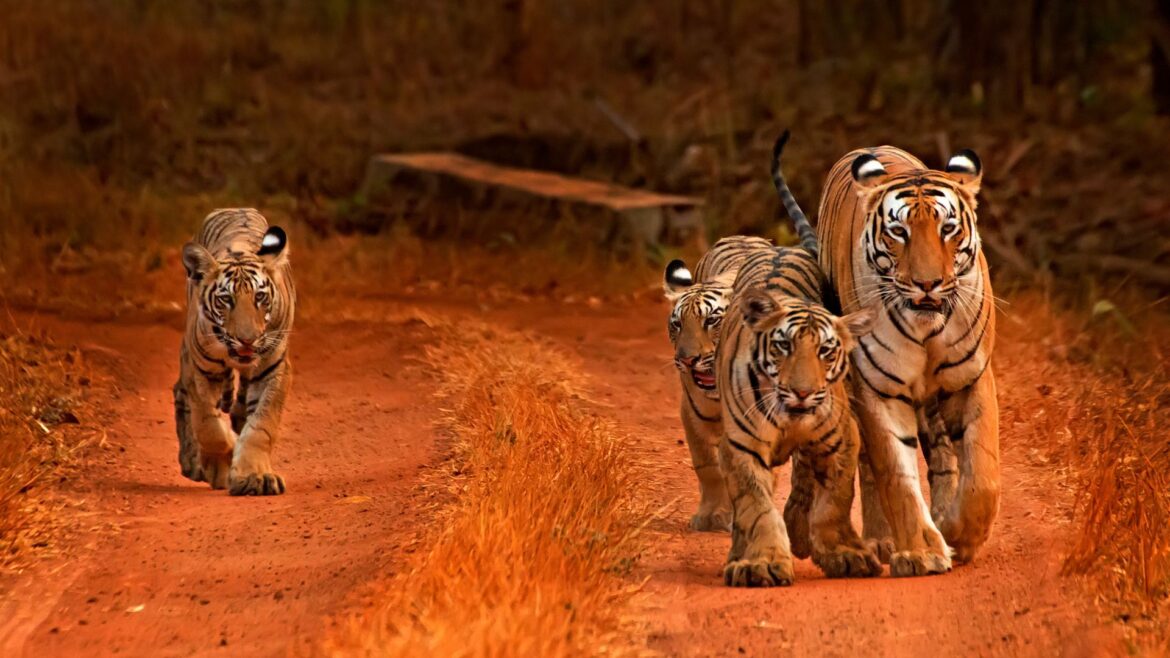There are seven big cats namely – Lions, Tigers, Leopards, Jaguars, Cheetahs, Snow Leopards and Puma (Mountain lion / Panther).
These species are distributed across various continents, inhabiting diverse ecosystems ranging from savannas and forests to mountains and grasslands. Out of these seven big cats, five are found in India – Tiger, Lion, Leopard, Snow Leopard and Cheetah.
Poaching is leading to dwindling population of the big cats and much be stopped before they are near extinction. Indian Cheetah was declared extinct in 1952. However, in 2022, India, in collaboration with Namibia introduced Cheetah’s back onto the Indian soil at Kuno National Park in Madhya Pradesh. India is also launched the International Big Cat Alliance (IBCA) in 2023 as a collaborative efforts between countries to help each other conserve big cats, combat illegal wildlife trade and implement global conservation strategies.
Some of the reasons for big cat poaching are –
1. Illegal Wildlife Trade and economic gain
Big cats are poached for their skins, bones, claws, and teeth, which are highly valued in illegal wildlife markets. Skins are often used for decorative purposes or as trophies, while bones and other parts are used in traditional medicines. Some big cats, especially cubs, are captured and sold as exotic pets. They may also be poached and traded with apigacor circuses and private zoos. The allure of owning or displaying a powerful and majestic big cat can drive this illegal trade, despite the significant ethical, legal, and conservation issues associated with it.
The high value of big cat parts in black markets provides a strong financial incentive for poachers. The substantial profits from these illegal activities provide strong financial incentives for poachers and traffickers, driving the continued exploitation and endangerment of these majestic animals.
2. Traditional Medicine
In some cultures, particularly in Asia, big cat parts (especially tiger bones) are believed to have medicinal properties. For instance, tiger bones are often ground into powders or used to make tonics thought to treat conditions like rheumatism, arthritis, and various other ailments. These beliefs, rooted in ancient practices and cultural traditions, drive the demand for big cat parts despite the lack of scientific evidence supporting their efficacy.
Also Read: The International Big Cat Alliance – A Global Initiative Led by India
3. Human-Wildlife Conflict
Big cats sometimes prey on livestock, causing significant economic losses for farmers and herders. In retaliation, these communities may kill the big cats to protect their animals and livelihoods.
As human populations expand and encroach on natural habitats, competition for resources increases. In areas where big cats pose a direct threat to human safety, such as attacking people or encroaching on populated areas, they may be killed preemptively to prevent potential harm or to reduce their presence near human settlements.
4. Cultural Practices
In some cultures, big cat parts are used in traditional rituals, ceremonies, and as symbols of power and status.
Conservation of big cats is facing many challenges. In many regions, law enforcement is insufficient to combat poaching effectively. Corruption and lack of resources hinder conservation efforts. Urbanization, deforestation, and agricultural expansion reduce the natural habitats of big cats, making them more vulnerable to poaching. Organized crime networks involved in wildlife trafficking are sophisticated and difficult to dismantle.
There are challenges, but there are many conservation efforts seen as well. There are increased patrolling and monitoring in wildlife reserves and national parks to deter poaching activities. Forest officials are working with local communities to reduce human-wildlife conflict, provide alternative livelihoods, and raise awareness about the importance of big cat conservation. International alliances such as IBCA will also contribute greatly to the cause driving international cooperation and assistance.


